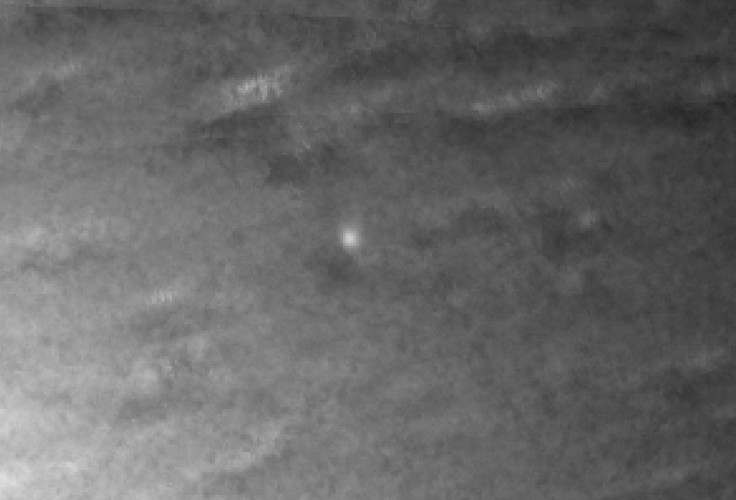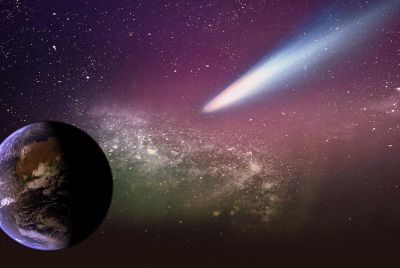3I/ATLAS Update: Data Suggest 'Artificially Guided' Object Defying Physics
3I/ATLAS is accelerating and blue. Is it an 'alien engine' as Avi Loeb suggests, or a comet as NASA claims?

A massive, Manhattan-sized object is speeding through our solar system, and it is behaving strangely. Designated 3I/ATLAS (discovered by the Asteroid Terrestrial-impact Last Alert System telescope), this interstellar visitor is accelerating without a visible, gravitational cause and has recently turned a 'startlingly blue' colour.
🚨 3I/ATLAS: POSSIBLE BREAKTHROUGH 🚨
— Astronomy Vibes (@AstronomyVibes) November 2, 2025
Early data from astronomers suggest that Comet 3I/ATLAS may have shown a non-natural acceleration at perihelion — maneuvering away from the Sun while mysteriously brightening.
If confirmed, it would defy every known natural explanation.… pic.twitter.com/DKF8diuM31
As its designation suggests, it is the third confirmed interstellar object ('I') ever detected, following the discoveries of 1I/'Oumuamua and 2I/Borisov. While NASA insists it is simply a comet, one prominent Harvard astrophysicist suggests these anomalies could be signs of something far more extraordinary: an 'alien craft engine.'

The 'Alien Engine' Theory For Interstellar Object 3I/ATLAS
The core of the controversy comes from Harvard's Avi Loeb, who famously courted controversy for proposing that the first interstellar visitor, 1I/'Oumuamua, was also a piece of alien technology. Loeb argued in a recent paper that the strange physics of 3I/ATLAS may not be natural.
The object's non-gravitational acceleration, recorded by NASA this week, is the primary mystery. If 3I/ATLAS were a typical comet, this acceleration would be caused by 'dramatic outgassing' as the sun heats its icy surface.
However, such a process would be so violent that the object would be expected to lose half its mass and exhibit a 'huge plume of debris' in the coming months, a plume that has not yet been observed.
Loeb offers a radical alternative. 'Alternatively, the non-gravitational acceleration might be the technological signature of an internal engine,' he wrote in a Medium post Friday.
This, he argues, could also account for the second anomaly: its colour. This might also explain the report on 3I/ATLAS getting 'bluer than Sun.' While Loeb concedes it could still be a natural signature of a comet, he posits, 'It could potentially be explained by a hot engine or source of artificial light.'

A 'Surprising' Colour Shift For Interstellar Object 3I/ATLAS
Our view of this interstellar visitor has been frustratingly limited. Earth's telescopes were prevented from directly measuring 3I/ATLAS as it came within 172 million miles of the sun; our 'pale blue dot' was simply on the opposite side of our local star at the time.
However, several sun-orbiting crafts — operating independently of Earth-based observatories — were in the perfect position to observe it. Measurements from these probes, detailed in a paper from the US Naval Research Lab, showed a 'rapid brightening.' More startlingly, the object appeared 'distinctly bluer than the Sun.'
This hue is 'very surprising,' according to Loeb. It sharply contrasts with earlier observations that showed the object to be red and then changing to green. This inconsistent, chameleon-like appearance only deepens the mystery.

Interstellar Object 3I/ATLAS: The Showdown in December
The scientific community may not have to wait long for an answer. 3I/ATLAS is expected to make its closest pass to Earth on Dec. 19, zooming by at roughly 167 million miles away. This will provide terrestrial researchers their best opportunity to finally determine its true nature.
For Loeb, this is the moment of truth. 'If we do not observe a massive cloud of gas around 3I/ATLAS in December,' Loeb said, it could be an indicator of a 'propulsion system.'
This impending showdown is already mired in controversy. Loeb blasted NASA for not providing images taken by the Mars Reconnaissance Orbiter's HiRISE camera during the object's close pass to the Red Planet during the first week of October. Sources told The Post that these 'highly anticipated images' won't be shared by NASA until the government reopens due to an ongoing federal budget deadlock in Washington.
Amid the speculation, NASA officials are attempting to shut down the 'alien' claims. NASA's Acting Administrator Sean Duffy, who is currently serving in the unusual dual role of transportation secretary and acting head of the space agency amid the shutdown, addressed the issue on X (formerly Twitter) on Thursday. In a response to a question from fellow reality TV-alum Kim Kardashian, Duffy stated, 'NASA's observations show that this is the third interstellar comet to pass through our solar system.'
He was unequivocal in his reassurance: 'No aliens. No threat to life here on Earth.'
With the scientific community divided, 3I/ATLAS continues its mysterious journey. While NASA officials like Sean Duffy provide firm reassurance that the object is a harmless comet, the unexplained data—the non-gravitational acceleration and the 'startlingly blue' colour—keep Harvard's 'alien engine' hypothesis alive.
As the controversy over the withheld Mars images deepens, the world must now wait for the December 19 showdown. Keep your eyes on the data from this closest approach, which may finally reveal whether 3I/ATLAS is a natural wonder or the 'technological signature' of an artificial craft.
© Copyright IBTimes 2025. All rights reserved.





















